Cordyceps Mushrooms: Complete Guide to Nature's Energy-Boosting Fungi
What Are Cordyceps Mushrooms?
Cordyceps mushrooms represent one of the most fascinating and unique groups of fungi in the natural world. Unlike typical mushrooms that grow from soil or decaying organic matter, cordyceps are parasitic fungi that traditionally grow by infecting insects and other arthropods, eventually replacing the host's tissue with their own mycelium. This extraordinary life cycle has earned them the nickname "zombie fungi," though their reputation in traditional medicine focuses on their remarkable health-promoting properties rather than their unusual biology.
The most well-known species, Cordyceps sinensis, has been treasured in Traditional Chinese Medicine for over 1,500 years, where it's called "winter worm, summer grass" (dongchong xiacao) due to its unique growth pattern. Growing at high altitudes in the Tibetan Plateau and other mountainous regions of Asia, wild Cordyceps sinensis commands astronomical prices—sometimes exceeding the cost of gold—due to its rarity and the difficulty of harvesting it from remote locations.
Modern science has developed cultivation methods for related species, particularly Cordyceps militaris, which can be grown commercially without insect hosts. These cultivated varieties retain many of the beneficial compounds found in wild cordyceps while being more accessible and sustainable. Today, cordyceps mushrooms are available as supplements, powders, and extracts, making their potential benefits available to a global audience.
Research into cordyceps has revealed an impressive array of bioactive compounds, including cordycepin, polysaccharides, sterols, and various nucleosides that may contribute to their reputation as natural energy enhancers and performance optimizers. From ancient Tibetan herders who noticed increased stamina in their livestock after grazing on cordyceps to modern athletes seeking natural performance enhancement, these remarkable fungi continue to captivate both traditional healers and contemporary researchers.

Types of Cordyceps Mushrooms
Understanding the different species of cordyceps helps clarify their various uses and availability:
-
Cordyceps sinensis (Wild/Traditional):
- The original species used in traditional Chinese medicine
- Grows naturally on caterpillar larvae at altitudes above 3,800 meters
- Found primarily in Tibet, Nepal, Bhutan, and parts of India and China
- Extremely rare and expensive due to overharvesting and climate change
- Considered the "gold standard" but increasingly difficult to obtain sustainably
-
Cordyceps militaris (Cultivated):
- Most commonly cultivated species for commercial production
- Grows on various substrates without requiring insect hosts
- Contains many of the same active compounds as C. sinensis
- More sustainable and accessible than wild varieties
- Bright orange color when fresh, distinctive finger-like appearance
-
Cordyceps ophioglossoides:
- North American species that parasitizes underground fungi
- Less studied than Asian varieties
- Found in deciduous and mixed forests
- Not commonly used in commercial preparations
- Subject of increasing research interest
-
Cordyceps capitata:
- Another North American species
- Parasitizes underground fungi similar to C. ophioglossoides
- Distinctive club-shaped appearance
- Limited commercial availability
- Potential subject for future cultivation research
-
Cordyceps subsessilis:
- Asian species that parasitizes beetle larvae
- Less common than C. sinensis and C. militaris
- Contains similar bioactive compounds
- Occasionally used in traditional preparations
- Limited commercial cultivation
The vast majority of commercial cordyceps products today use Cordyceps militaris due to its successful cultivation methods and similar compound profile to the traditional C. sinensis, making the benefits of cordyceps mushrooms more accessible and affordable for consumers worldwide.
Health Benefits of Cordyceps Mushrooms
Energy and Athletic Performance Enhancement
Cordyceps mushrooms have gained widespread recognition for their potential to enhance energy levels and athletic performance:
-
Cellular energy production:
- May increase ATP (adenosine triphosphate) production in cells
- ATP is the primary energy currency of cellular metabolism
- Studies suggest improved energy efficiency at the mitochondrial level
- May help cells utilize oxygen more effectively
- Could support sustained energy without stimulant effects
-
Exercise performance and endurance:
- Research indicates potential improvements in aerobic capacity
- May enhance oxygen utilization during physical activity
- Studies show possible increases in time to exhaustion during exercise
- Could help reduce fatigue during prolonged physical activity
- May support faster recovery between exercise sessions
-
Respiratory function support:
- Traditional use for supporting lung function and breathing
- May help improve oxygen uptake and utilization
- Research suggests potential benefits for respiratory efficiency
- Could support healthy lung capacity and function
- May help with adaptation to high-altitude environments
-
Physical stamina and vitality:
- Traditional reputation as a vitality tonic
- May help combat general fatigue and weakness
- Could support sustained physical performance
- May help maintain energy levels throughout the day
- Potential benefits for age-related decline in energy
-
Research findings:
- Human studies show improvements in exercise performance metrics
- Animal research demonstrates enhanced endurance capacity
- Clinical trials indicate potential benefits for older adults
- Studies suggest improvements in quality of life measures
- Ongoing research continues to explore performance benefits
These energy-enhancing properties have made cordyceps mushrooms popular among athletes, fitness enthusiasts, and individuals seeking natural ways to boost their vitality and stamina.
Immune System Support
Cordyceps mushrooms offer significant potential for supporting immune system function:
-
Immune modulation properties:
- May help balance immune responses rather than simply stimulating them
- Could support both innate and adaptive immune functions
- May help regulate inflammatory responses
- Potential benefits for maintaining immune system balance
- Could support healthy immune aging
-
Polysaccharide compounds:
- Contain beta-glucans and other immune-supporting polysaccharides
- These compounds may activate various immune cells
- Could enhance macrophage and natural killer cell activity
- May support healthy cytokine production
- Potential benefits for immune surveillance functions
-
Antioxidant properties:
- Contains various antioxidant compounds that may protect immune cells
- Could help reduce oxidative stress that can impair immune function
- May support cellular protection from free radical damage
- Potential benefits for maintaining immune cell health
- Could support overall immune system resilience
-
Traditional immune applications:
- Long history of use for supporting resistance to illness
- Traditional use during recovery from illness
- Historical application for supporting overall health and vitality
- Used traditionally to support adaptation to environmental stressors
- Traditional reputation for supporting longevity and healthy aging
-
Modern research insights:
- Studies indicate potential immune-modulating effects
- Research suggests benefits for immune cell function
- Clinical trials exploring applications for immune support
- Animal studies demonstrate various immune-related benefits
- Ongoing research into mechanisms of immune support
The immune-supporting properties of cordyceps make them valuable for individuals seeking natural ways to maintain healthy immune function and overall resilience.
Respiratory and Lung Health
Cordyceps mushrooms have a long history of use for supporting respiratory health:
-
Traditional respiratory applications:
- Used for centuries in Traditional Chinese Medicine for lung support
- Traditional applications for breathing difficulties and respiratory weakness
- Historical use for supporting lung function in older adults
- Traditional reputation for helping with seasonal respiratory challenges
- Used traditionally to support recovery from respiratory illness
-
Oxygen utilization enhancement:
- May help improve the body's ability to use oxygen efficiently
- Could support better oxygen delivery to tissues
- May help with adaptation to low-oxygen environments
- Potential benefits for high-altitude performance
- Could support optimal cellular oxygenation
-
Research on respiratory function:
- Studies suggest potential improvements in lung function parameters
- Research indicates possible benefits for exercise-induced respiratory stress
- Clinical trials exploring applications for respiratory health
- Animal studies demonstrate various respiratory benefits
- Ongoing research into mechanisms of respiratory support
-
Bronchial and lung support:
- May help support healthy bronchial function
- Could help maintain clear respiratory passages
- Potential benefits for respiratory comfort and ease
- May support healthy inflammatory responses in respiratory tissues
- Could help with seasonal respiratory challenges
-
Quality of life benefits:
- May help improve overall respiratory comfort
- Could support better sleep quality through improved breathing
- May help with daily activities requiring good respiratory function
- Potential benefits for maintaining active lifestyles
- Could support overall sense of well-being related to easy breathing
These respiratory benefits make cordyceps particularly interesting for individuals seeking natural support for lung health and breathing function.
Kidney and Liver Health Support
Cordyceps mushrooms have traditional and modern applications for supporting organ health:
-
Kidney function support:
- Traditional Chinese Medicine considers cordyceps a kidney tonic
- May help support healthy kidney function
- Could help with kidney-related fatigue and weakness
- Traditional use for supporting urinary system health
- May help support healthy fluid balance
-
Liver health applications:
- May help support healthy liver function
- Could help protect liver cells from oxidative stress
- Traditional use for supporting liver health and detoxification
- May help support healthy cholesterol metabolism
- Could help with liver-related fatigue
-
Research on organ protection:
- Studies suggest potential protective effects on kidney tissue
- Research indicates possible benefits for liver health markers
- Animal studies demonstrate various organ-protective effects
- Clinical trials exploring applications for organ health support
- Ongoing research into mechanisms of organ protection
-
Traditional organ tonification:
- Used traditionally to strengthen and support vital organs
- Traditional reputation for supporting healthy aging of organs
- Historical use for maintaining organ vitality and function
- Traditional applications for supporting recovery from illness
- Used traditionally to support overall constitutional strength
-
Modern applications:
- Growing interest in cordyceps for supporting healthy aging
- Potential applications for maintaining organ health
- Interest in natural approaches to organ support
- Research into cordyceps for various health applications
- Growing understanding of cordyceps' organ-protective potential
The organ-supporting properties of cordyceps make them valuable for individuals interested in natural approaches to maintaining kidney and liver health.
Bioactive Compounds in Cordyceps
Key Active Compounds
Understanding the bioactive compounds in cordyceps helps explain their various health benefits:
-
Cordycepin (3'-deoxyadenosine):
- Unique nucleoside analog found primarily in Cordyceps militaris
- Structurally similar to adenosine, a key cellular signaling molecule
- May influence cellular energy production and signaling
- Research suggests potential anti-inflammatory properties
- Could play a role in the immune-modulating effects of cordyceps
-
Polysaccharides:
- Complex carbohydrates including beta-glucans
- May support immune system function
- Could help modulate inflammatory responses
- Traditional association with energy and vitality benefits
- May contribute to the adaptogenic properties of cordyceps
-
Adenosine:
- Naturally occurring nucleoside important for cellular energy
- May help regulate cardiovascular function
- Could influence sleep and relaxation
- May play a role in the energy-enhancing effects
- Important for various cellular metabolic processes
-
Sterols and steroid compounds:
- Various sterol compounds including ergosterol
- May contribute to the traditional vitality-enhancing effects
- Could support healthy hormone balance
- May play a role in the adaptogenic properties
- Traditional association with strength and endurance benefits
-
Proteins and amino acids:
- Various bioactive proteins and peptides
- Essential and non-essential amino acids
- May contribute to the overall nutritional value
- Could support protein synthesis and tissue repair
- May play a role in the recovery-enhancing effects
-
Trace minerals and vitamins:
- Various minerals including selenium, zinc, and iron
- B-complex vitamins and other nutritional compounds
- May contribute to the overall health benefits
- Could support various enzymatic processes
- May enhance the bioavailability of other compounds
The synergistic interaction of these compounds likely contributes to the comprehensive health benefits associated with cordyceps mushrooms.
Mechanisms of Action
Research has identified several potential mechanisms by which cordyceps may exert their effects:
-
Mitochondrial enhancement:
- May improve mitochondrial function and efficiency
- Could enhance cellular ATP production
- May support optimal cellular energy metabolism
- Could help protect mitochondria from oxidative damage
- May support healthy cellular aging
-
Oxygen utilization improvement:
- May enhance the body's ability to use oxygen efficiently
- Could improve oxygen transport and delivery
- May support adaptation to low-oxygen environments
- Could enhance aerobic energy production
- May support optimal tissue oxygenation
-
Immune system modulation:
- May help balance immune responses
- Could enhance immune cell communication
- May support healthy inflammatory responses
- Could help maintain immune system homeostasis
- May support immune adaptation to stressors
-
Hormonal balance support:
- May help support healthy hormone production
- Could influence adrenal function and stress response
- May support healthy testosterone levels
- Could help with hormonal aspects of energy and vitality
- May support healthy aging of endocrine systems
-
Cardiovascular support:
- May help support healthy blood flow
- Could support healthy cholesterol levels
- May help maintain healthy blood pressure
- Could support overall cardiovascular function
- May help with circulation and tissue perfusion
These mechanisms help explain the wide range of traditional uses and modern applications for cordyceps mushrooms.
Traditional vs. Modern Uses
Historical Applications in Traditional Medicine
Cordyceps has a rich history of use in traditional healing systems:
-
Traditional Chinese Medicine applications:
- Classified as a superior tonic suitable for long-term use
- Used to strengthen the kidney and lung systems
- Traditional applications for fatigue, weakness, and low vitality
- Used to support recovery from illness and strengthen constitution
- Traditional reputation as a longevity tonic
-
Tibetan traditional medicine:
- Used by Tibetan herders who observed increased stamina in livestock
- Traditional applications for high-altitude adaptation
- Used to support endurance and physical performance
- Traditional reputation for enhancing vitality and strength
- Used in traditional formulas for supporting overall health
-
Traditional preparation methods:
- Often prepared as teas or decoctions
- Sometimes combined with other herbs in traditional formulas
- Traditionally prepared with chicken or duck for nourishing soups
- Used in various traditional tonic wines and extracts
- Traditional emphasis on long-term, consistent use
-
Traditional indications:
- Chronic fatigue and weakness
- Respiratory difficulties and breathing problems
- Kidney weakness and urinary system issues
- Recovery from illness and constitutional weakness
- Support for healthy aging and longevity
-
Cultural significance:
- Considered one of the most precious medicinal substances
- Used by royalty and wealthy families due to rarity and cost
- Associated with vitality, strength, and longevity
- Integrated into cultural practices around health and wellness
- Traditional symbol of exceptional medicine and healing
Contemporary Applications and Research
Modern science has expanded our understanding of cordyceps applications:
-
Sports and athletic performance:
- Used by endurance athletes for natural performance enhancement
- Applications for improving exercise capacity and recovery
- Interest from fitness enthusiasts for energy and stamina
- Research into applications for competitive sports
- Growing use in pre-workout and recovery supplements
-
Age-related health support:
- Interest in cordyceps for supporting healthy aging
- Applications for maintaining energy and vitality in older adults
- Research into age-related decline in physical function
- Interest in supporting cognitive function and mental clarity
- Applications for maintaining quality of life with aging
-
Chronic fatigue and energy support:
- Interest in natural approaches to chronic fatigue
- Applications for supporting energy in busy lifestyles
- Use for combating stress-related fatigue
- Interest in non-stimulant energy enhancement
- Applications for supporting work and life performance
-
Immune system optimization:
- Interest in natural immune system support
- Applications for seasonal immune challenges
- Use for supporting recovery from illness
- Interest in maintaining immune resilience
- Applications for supporting overall health and wellness
-
Respiratory health applications:
- Interest in natural approaches to respiratory health
- Applications for supporting breathing and lung function
- Use for seasonal respiratory challenges
- Interest in supporting exercise-related respiratory function
- Applications for maintaining respiratory comfort
The evolution from traditional use to modern applications demonstrates the enduring relevance of cordyceps mushrooms in supporting human health and performance.
How to Use Cordyceps Mushrooms
Available Forms and Preparations
Cordyceps mushrooms are available in various forms to suit different preferences and needs:
-
Powder supplements:
- Finely ground cordyceps fruiting bodies or mycelium
- Can be mixed into smoothies, beverages, or foods
- Typical dosage ranges from 1-3 grams daily
- Often more economical than other forms
- Versatile for various preparation methods
-
Capsule supplements:
- Convenient, pre-measured doses
- Easy to incorporate into daily supplement routines
- Typical dosages range from 500mg to 2000mg per capsule
- Often standardized for specific compound content
- Good option for those who dislike the taste
-
Liquid extracts and tinctures:
- Concentrated liquid preparations
- Often have higher bioavailability than powders
- Can be taken directly or added to beverages
- Typical dosages range from 1-3 ml daily
- May be alcohol-based or alcohol-free preparations
-
Whole dried mushrooms:
- Traditional form used for teas and decoctions
- Can be ground into powder or used whole
- Often prepared by simmering in water for extended periods
- Traditional preparation methods preserve cultural practices
- May be used in cooking and culinary applications
-
Standardized extracts:
- Concentrated preparations with guaranteed compound levels
- Often standardized for cordycepin or polysaccharide content
- May have higher potency than non-standardized preparations
- Typically more expensive but potentially more effective
- Good option for therapeutic applications
-
Combination products:
- Often combined with other medicinal mushrooms
- May be included in adaptogen blends
- Sometimes combined with herbs or nutrients for specific effects
- Can provide synergistic benefits from multiple ingredients
- Popular in comprehensive wellness formulations
Dosage Guidelines and Timing
Proper dosage and timing can optimize the benefits of cordyceps supplementation:
-
General dosage recommendations:
- Powder: 1-3 grams daily
- Capsules: 500-2000mg daily (depending on concentration)
- Liquid extracts: 1-3 ml daily (follow manufacturer guidelines)
- Whole mushrooms: 3-6 grams daily when prepared as tea
- Start with lower doses and gradually increase as needed
-
Timing considerations:
- Morning use: Many prefer taking cordyceps in the morning for energy benefits
- Pre-workout: Can be taken 30-60 minutes before exercise
- With meals: Taking with food may improve absorption and reduce stomach upset
- Consistent timing: Regular daily use often provides best results
- Avoid evening use: Some people find cordyceps energizing and prefer not to take it late in the day
-
Factors affecting dosage:
- Body weight: Larger individuals may need higher doses
- Health goals: Performance enhancement may require higher doses than general wellness
- Product quality: Higher quality, more concentrated products may require lower doses
- Individual sensitivity: Some people are more responsive than others
- Concurrent medications: May affect appropriate dosing
-
Cycling and long-term use:
- Many people use cordyceps continuously without cycling
- Some prefer 5 days on, 2 days off patterns
- Others cycle several weeks on, one week off
- Traditional Chinese Medicine emphasizes long-term, consistent use
- Individual responses may guide optimal cycling patterns
-
Special considerations:
- Athletes: May use higher doses during training periods
- Older adults: Often start with lower doses and increase gradually
- Sensitive individuals: Should start with very small doses
- Pre-existing conditions: Should consult healthcare providers for appropriate dosing
- Pregnancy/nursing: Generally advised to avoid use during these periods
Starting with conservative doses and adjusting based on individual response helps optimize cordyceps supplementation while minimizing potential side effects.

Cultivation and Sustainability
Modern Cultivation Methods
The development of sustainable cultivation methods has made cordyceps more accessible:
-
Substrate-based cultivation:
- Cordyceps militaris can be grown on various organic substrates
- Common substrates include rice, wheat, and other grains
- Controlled environment cultivation ensures consistent quality
- No insects required for modern cultivation methods
- Significantly more sustainable than wild harvesting
-
Laboratory cultivation techniques:
- Sterile cultivation environments prevent contamination
- Controlled temperature, humidity, and lighting conditions
- Optimized nutrition for maximum compound production
- Quality control throughout the growing process
- Standardized production methods for consistent results
-
Liquid fermentation methods:
- Growing cordyceps mycelium in liquid nutrient media
- Faster production than solid substrate methods
- Can produce high concentrations of bioactive compounds
- Allows for standardization of specific compounds
- More environmentally efficient than traditional methods
-
Organic cultivation practices:
- Many producers use organic certification standards
- Avoiding synthetic pesticides and chemicals
- Focus on sustainable and environmentally friendly practices
- Meeting consumer demand for clean, natural products
- Supporting environmental health and sustainability
-
Quality control measures:
- Regular testing for compound content and purity
- Contamination testing for molds, bacteria, and heavy metals
- Standardization of active compound levels
- Documentation of cultivation and processing methods
- Third-party testing for quality verification
Sustainability and Conservation Concerns
The cordyceps industry faces important sustainability challenges:
-
Wild cordyceps conservation:
- Wild Cordyceps sinensis is severely overexploited
- Climate change threatens natural habitats
- Traditional harvesting areas face environmental pressure
- Need for conservation of wild populations
- Importance of sustainable wild harvesting practices
-
Cultivated alternatives:
- Cordyceps militaris provides sustainable alternative
- Cultivation reduces pressure on wild populations
- More accessible and affordable than wild varieties
- Can be produced year-round with consistent quality
- Allows for scaling to meet growing demand
-
Environmental considerations:
- Cultivation can be more environmentally friendly than wild harvesting
- Reduced transportation needs when grown locally
- Controlled growing conditions minimize environmental impact
- Potential for using agricultural waste as substrates
- Opportunity for sustainable business practices
-
Economic sustainability:
- Cultivation provides economic opportunities in rural areas
- More stable pricing than wild-harvested varieties
- Reduced dependence on increasingly scarce wild resources
- Opportunity for local and regional production
- Support for sustainable agricultural practices
-
Research and development:
- Ongoing research into optimization of cultivation methods
- Development of new strains and varieties
- Improvement of compound production and standardization
- Research into sustainable and eco-friendly practices
- Innovation in processing and extraction methods
The shift toward sustainable cultivation methods ensures the long-term availability of cordyceps while protecting natural ecosystems and wild populations.
Quality and Selection Guidelines
Identifying High-Quality Cordyceps Products
Selecting quality cordyceps supplements requires understanding key quality indicators:
-
Species specification:
- Look for clear identification of species (C. militaris vs. C. sinensis)
- Avoid products that simply say "cordyceps" without species identification
- Understand the differences between species and their applications
- Be wary of products claiming wild C. sinensis at low prices
- Verify that the species matches your intended use
-
Cultivation and sourcing information:
- Look for information about cultivation methods
- Prefer products that specify substrate-grown or fermentation methods
- Avoid products with unclear or missing sourcing information
- Consider organic certification when available
- Look for transparency about geographical origin
-
Compound standardization:
- Look for products standardized for cordycepin content (for C. militaris)
- Check for polysaccharide content specifications
- Avoid products without any compound standardization
- Understand what compounds are being standardized and why
- Compare standardization levels between different products
-
Third-party testing:
- Look for products tested by independent laboratories
- Check for testing for purity, potency, and contaminants
- Verify testing for heavy metals, pesticides, and microbiological safety
- Look for certificates of analysis (COAs) when available
- Be wary of products without any testing verification
-
Manufacturing quality:
- Look for products manufactured in certified facilities
- Check for GMP (Good Manufacturing Practices) certification
- Consider companies with ISO or other quality certifications
- Look for information about extraction and processing methods
- Verify that manufacturing meets relevant regulatory standards
Red Flags and What to Avoid
Be cautious of products with these concerning characteristics:
-
Pricing red flags:
- Extremely low prices that seem too good to be true
- Wild C. sinensis products at unrealistically low prices
- Products without clear pricing justification
- Prices that are dramatically different from similar products
- Products that don't provide value for their price point
-
Marketing concerns:
- Exaggerated health claims or promises of miraculous results
- Claims that seem to violate FDA regulations
- Lack of scientific backing for claimed benefits
- Pressure tactics or limited-time offers
- Marketing that seems too good to be true
-
Quality concerns:
- Products without clear ingredient lists
- Lack of information about cultivation or sourcing
- No third-party testing or quality verification
- Products with unclear or missing expiration dates
- Supplements with unnecessary fillers or additives
-
Company red flags:
- Companies without clear contact information
- Lack of customer service or support
- No clear return or refund policies
- Companies without established reputation or track record
- Lack of transparency about business practices
-
Regulatory concerns:
- Products making illegal health claims
- Supplements not following FDA labeling requirements
- Products sold as medications rather than supplements
- Companies making medical diagnoses or treatment claims
- Products that seem to violate regulatory guidelines
Taking time to research and select quality products ensures you receive the potential benefits of cordyceps while avoiding inferior or potentially problematic supplements.
Safety and Side Effects
General Safety Profile
Cordyceps mushrooms are generally considered safe for most healthy adults:
-
Overall safety record:
- Long history of traditional use without significant adverse effects
- Generally recognized as safe (GRAS) by traditional use standards
- Most people tolerate cordyceps well when used appropriately
- Serious adverse effects are rare with proper use
- Safety profile appears favorable compared to many other supplements
-
Common mild side effects:
- Digestive upset in sensitive individuals
- Mild nausea when taken on an empty stomach
- Occasional headaches, particularly when starting supplementation
- Some people report initial increase in energy that may be overstimulating
- Rare reports of skin rash or allergic reactions
-
Factors affecting tolerance:
- Individual sensitivity varies significantly
- Quality and purity of products can affect side effects
- Dosage levels influence likelihood of side effects
- Timing of consumption may affect tolerance
- Concurrent medications or supplements may influence effects
Precautions and Contraindications
Certain groups should exercise caution or avoid cordyceps:
-
Autoimmune conditions:
- Cordyceps may stimulate immune system activity
- Could potentially worsen autoimmune conditions
- People with lupus, rheumatoid arthritis, or multiple sclerosis should consult healthcare providers
- May interfere with immunosuppressive medications
- Individual responses may vary significantly
-
Bleeding disorders and surgery:
- Cordyceps may have mild anticoagulant effects
- Could potentially increase bleeding risk
- Should be discontinued before scheduled surgery
- May interact with blood-thinning medications
- People with bleeding disorders should use caution
-
Diabetes and blood sugar:
- May affect blood sugar levels
- Could enhance effects of diabetes medications
- People with diabetes should monitor blood sugar closely
- May require adjustment of diabetes medications
- Should consult healthcare providers before use
-
Pregnancy and breastfeeding:
- Limited safety data for use during pregnancy
- Generally recommended to avoid during pregnancy and breastfeeding
- Potential effects on developing fetus unknown
- May affect hormone levels
- Should consult healthcare providers before use
-
Children and adolescents:
- Limited safety data for use in children
- Generally not recommended for children without medical supervision
- May affect growth and development
- Dosing guidelines for children not well established
- Should consult pediatric healthcare providers
Drug Interactions
Cordyceps may interact with certain medications:
-
Immunosuppressive drugs:
- May counteract effects of immunosuppressive medications
- Could interfere with organ transplant medications
- May affect cancer treatment involving immune suppression
- Should consult healthcare providers before combining
- May require medication adjustments
-
Blood-thinning medications:
- May enhance effects of anticoagulant drugs
- Could increase bleeding risk when combined with warfarin
- May interact with aspirin and other antiplatelet drugs
- Should monitor bleeding parameters closely
- May require medication dose adjustments
-
Diabetes medications:
- May enhance blood sugar-lowering effects
- Could increase risk of hypoglycemia
- May interact with insulin and other diabetes drugs
- Should monitor blood sugar levels closely
- May require medication adjustments
-
Stimulant medications:
- May add to stimulant effects of certain medications
- Could potentially increase side effects of stimulants
- May interact with ADHD medications
- Could affect sleep patterns when combined with stimulants
- Should use caution with concurrent stimulant use
As with any supplement, it's important to consult with healthcare providers before starting cordyceps, especially if you have existing health conditions or take medications.
Frequently Asked Questions
Common Questions About Cordyceps Mushrooms
Here are answers to frequently asked questions about cordyceps:
-
Are cordyceps mushrooms safe for daily use? For most healthy adults, cordyceps appear safe for daily use when taken at appropriate doses. However, people with autoimmune conditions, bleeding disorders, or those taking medications should consult healthcare providers before regular use. Start with lower doses to assess individual tolerance.
-
How long does it take to see benefits from cordyceps? Some people notice energy benefits within days to weeks, while other effects may take longer to develop. Athletic performance benefits are often noticed within 2-4 weeks of consistent use. Immune and respiratory benefits may take 4-8 weeks or longer to become apparent with regular supplementation.
-
Can cordyceps replace my pre-workout supplement? Cordyceps may provide natural energy enhancement, but they work differently than caffeine-based pre-workout supplements. They may provide more sustained energy without jitters or crashes. However, the effects are typically milder and develop over time rather than providing immediate stimulation.
-
What's the difference between Cordyceps sinensis and Cordyceps militaris? C. sinensis is the traditional wild variety used in Chinese medicine but is extremely rare and expensive. C. militaris is cultivated commercially and contains many similar compounds, including higher levels of cordycepin. Most commercial products use C. militaris due to availability and sustainability.
-
Can I take cordyceps with other mushroom supplements? Cordyceps are often combined with other medicinal mushrooms like reishi, lion's mane, or chaga. These combinations may provide synergistic benefits. However, start with individual mushrooms to assess tolerance before combining multiple varieties.
-
Do cordyceps have any stimulant effects? Cordyceps don't contain caffeine or traditional stimulants, but many people report increased energy and alertness. The energy enhancement appears to work through improved cellular energy production rather than nervous system stimulation, often providing smoother, more sustained energy.
-
Can cordyceps help with chronic fatigue? While cordyceps have traditional uses for fatigue and some research suggests energy benefits, chronic fatigue syndrome is a complex medical condition requiring proper medical evaluation and treatment. Cordyceps might be a complementary approach but shouldn't replace medical care for chronic fatigue.
These answers address common concerns while emphasizing the importance of informed, safe use of cordyceps supplements.
Conclusion: Embracing the Power of Cordyceps Mushrooms
Cordyceps mushrooms represent a fascinating bridge between ancient wisdom and modern wellness science. From their unique parasitic lifecycle to their impressive array of bioactive compounds, these remarkable fungi continue to captivate researchers, athletes, and health enthusiasts seeking natural ways to enhance energy, performance, and overall well-being.
The evolution from rare, wild-harvested treasures to sustainably cultivated supplements has made the potential benefits of cordyceps accessible to a global audience. Modern cultivation methods not only provide more affordable options but also support environmental sustainability and conservation of wild populations.
Key benefits of cordyceps mushrooms include:
- Natural energy enhancement without stimulant side effects
- Athletic performance support through improved oxygen utilization and endurance
- Immune system modulation for better overall health resilience
- Respiratory health support for improved breathing and lung function
- Adaptogenic properties helping the body manage various stressors
When considering cordyceps supplementation, prioritize quality products from reputable manufacturers who provide transparency about species, cultivation methods, and compound standardization. Start with appropriate doses and consider consulting healthcare providers, especially if you have existing health conditions or take medications.
The growing body of research supporting cordyceps' traditional uses, combined with modern understanding of their bioactive compounds and mechanisms of action, suggests these mushrooms will continue to play an important role in natural health and wellness approaches.
Whether you're an athlete seeking natural performance enhancement, someone dealing with fatigue and low energy, or simply interested in the potential longevity benefits of medicinal mushrooms, cordyceps offer a compelling option backed by both traditional wisdom and scientific investigation.
As research continues to unveil new applications and optimize cultivation methods, cordyceps mushrooms stand as a testament to nature's remarkable ability to provide sophisticated solutions for human health and performance enhancement.


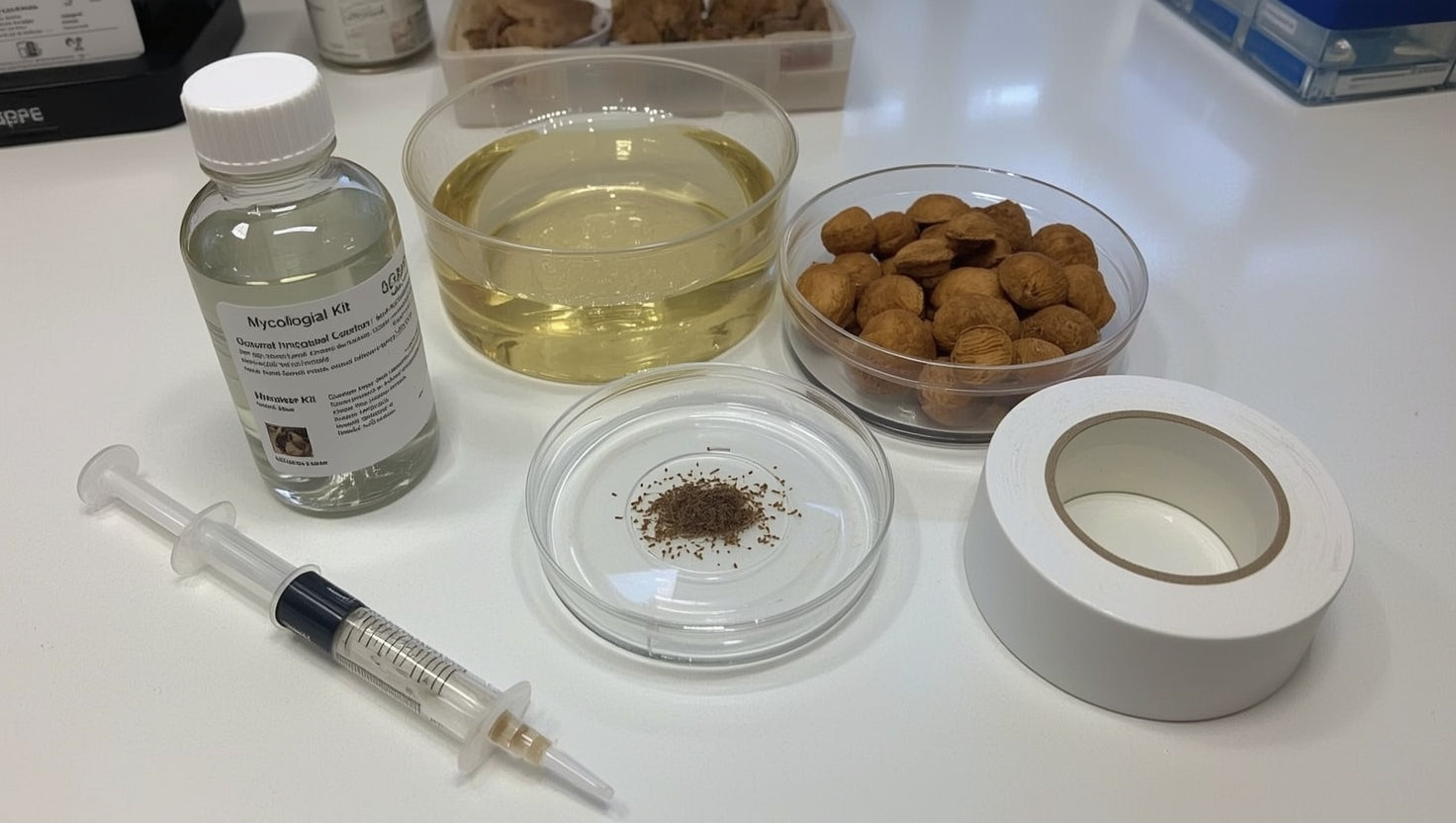
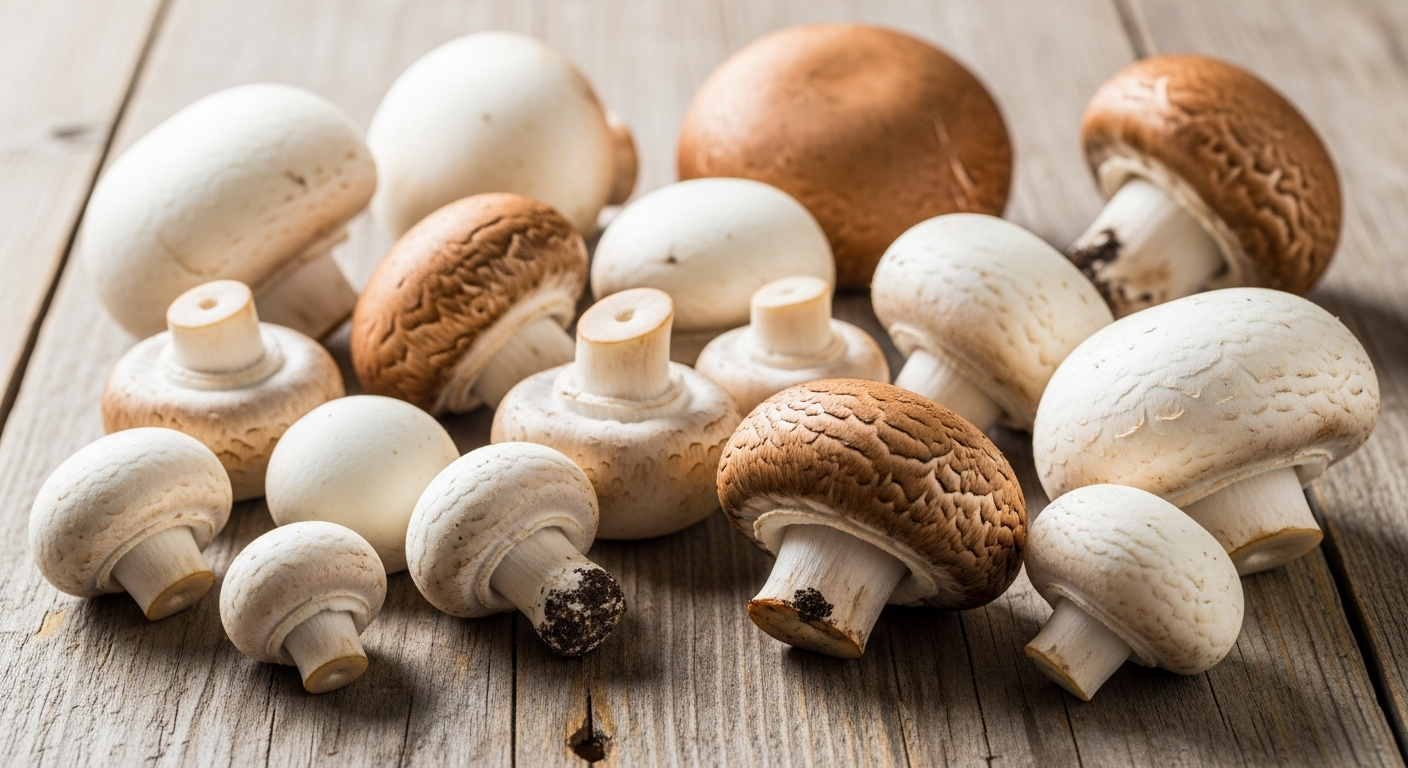

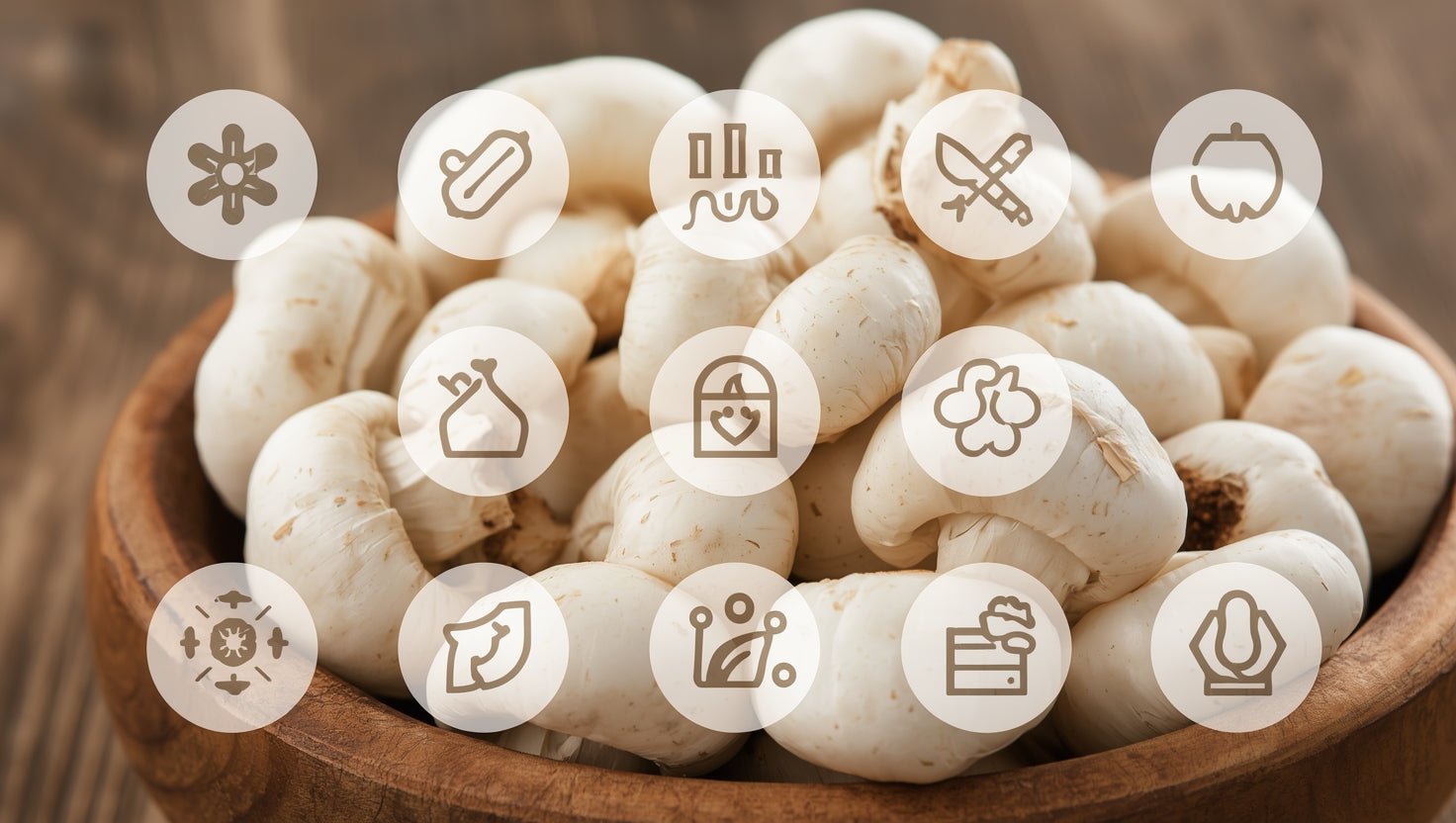

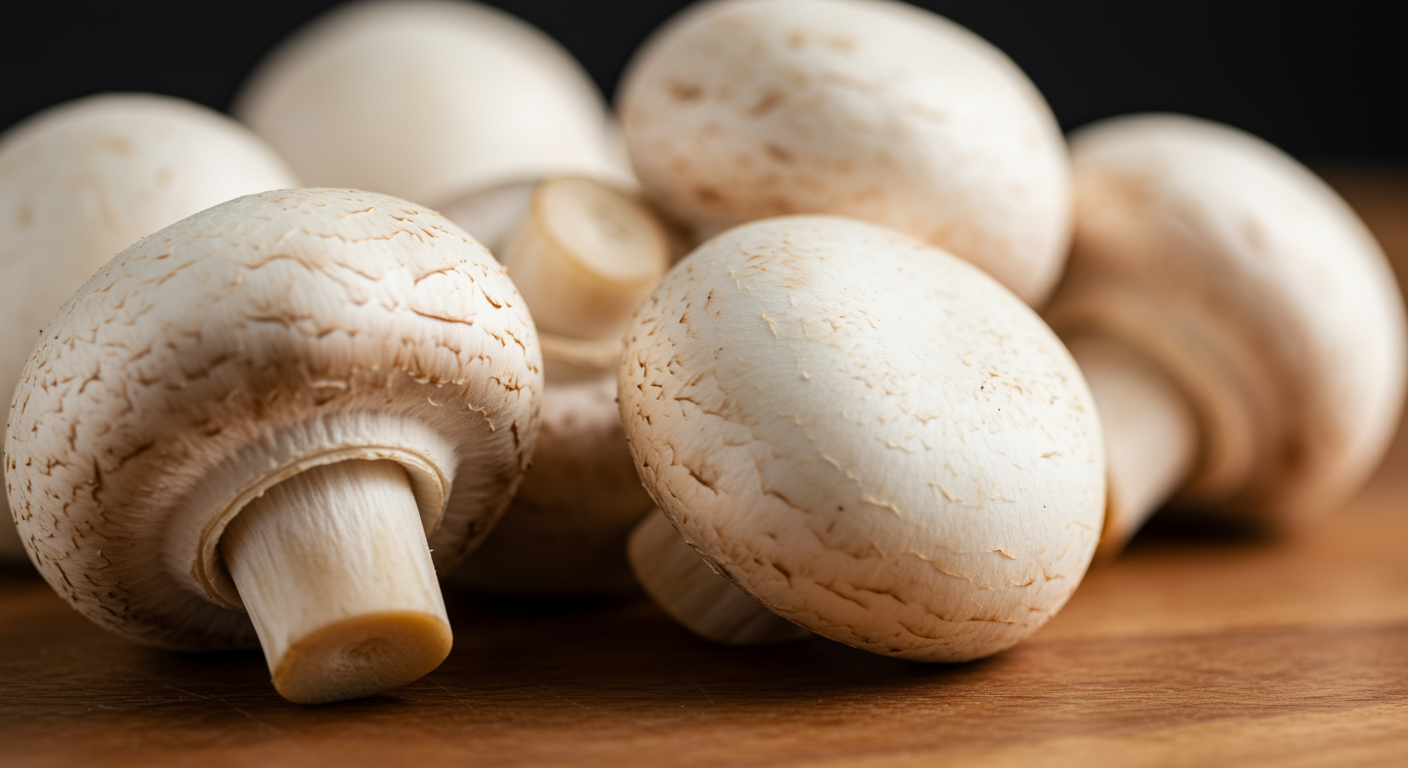
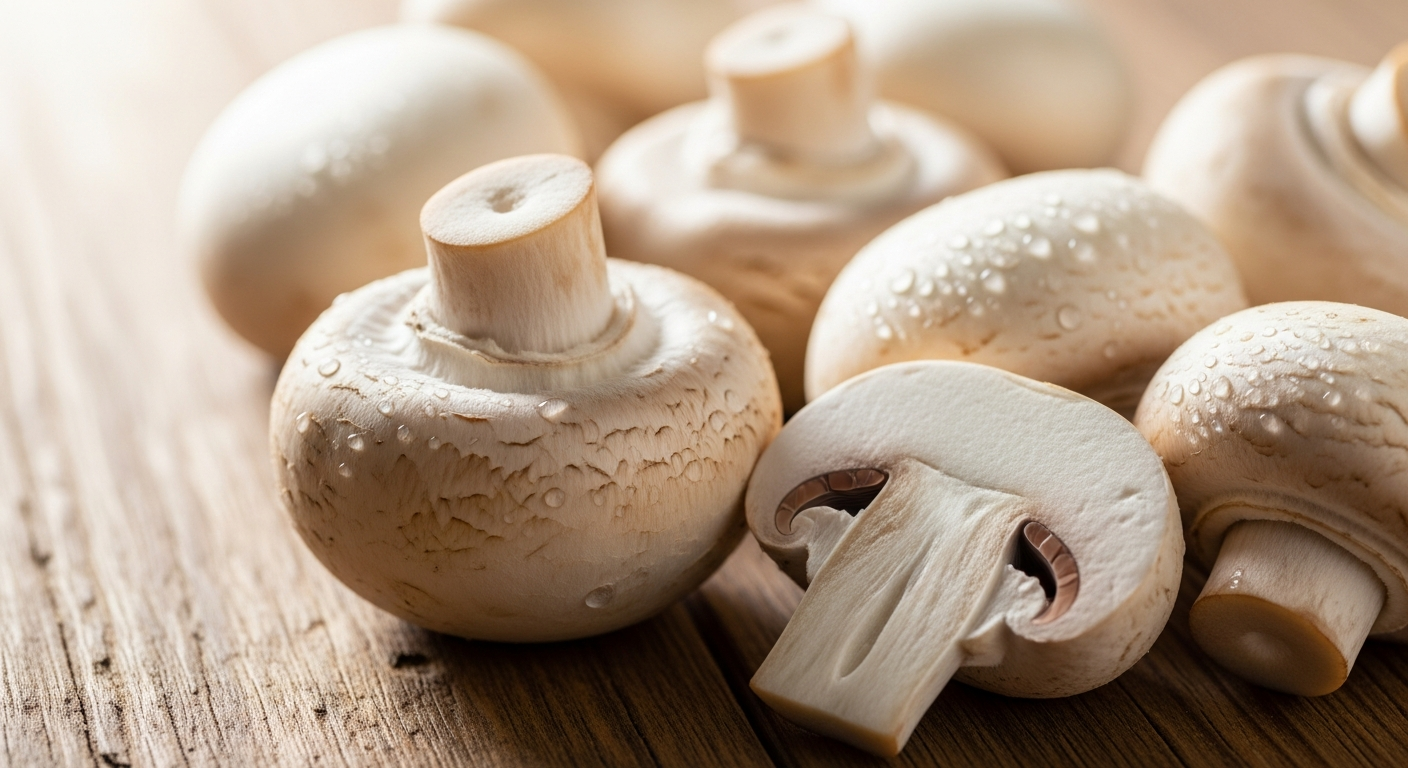
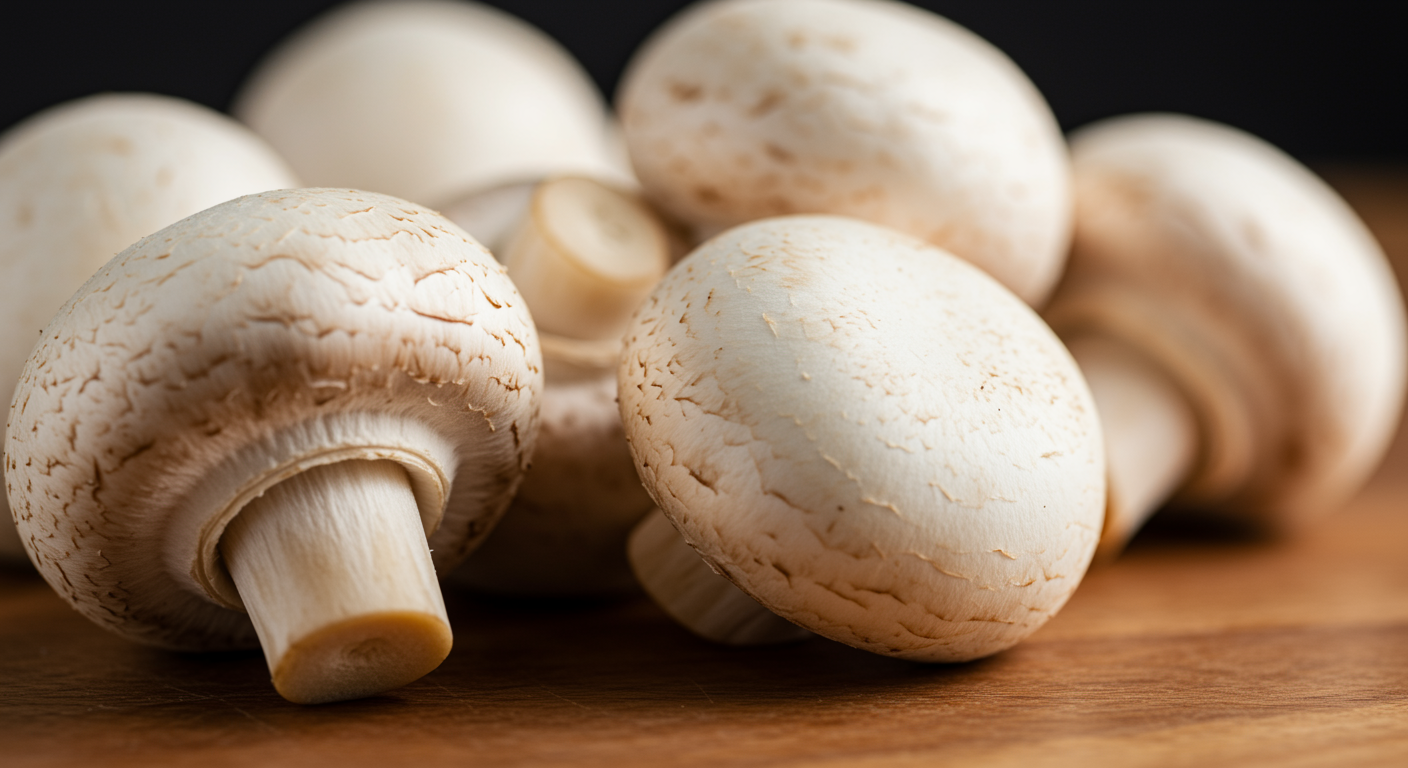



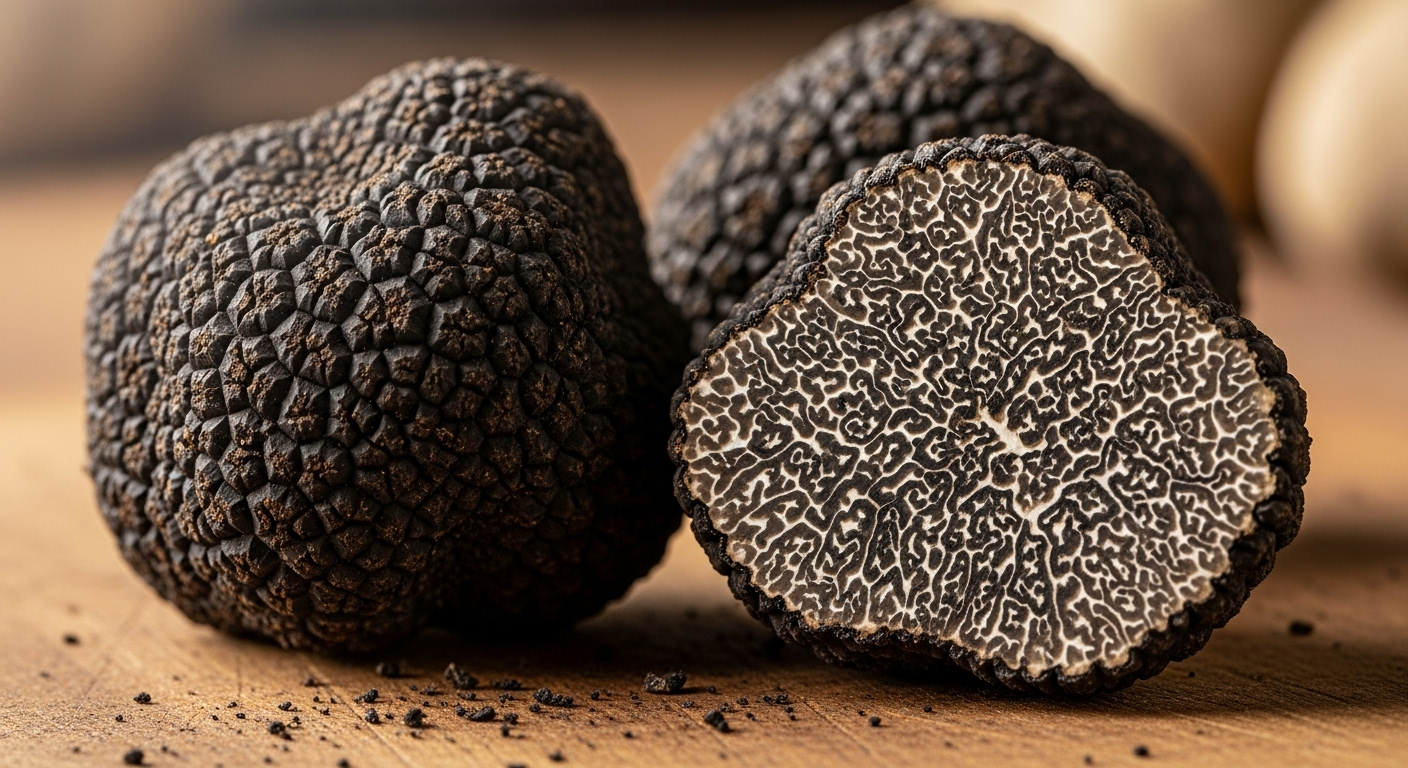
Share:
Penis Envy Mushrooms: A Beginner's Guide to Growing at Home
Benefits of Mushroom Coffee: A Brew Worth Trying